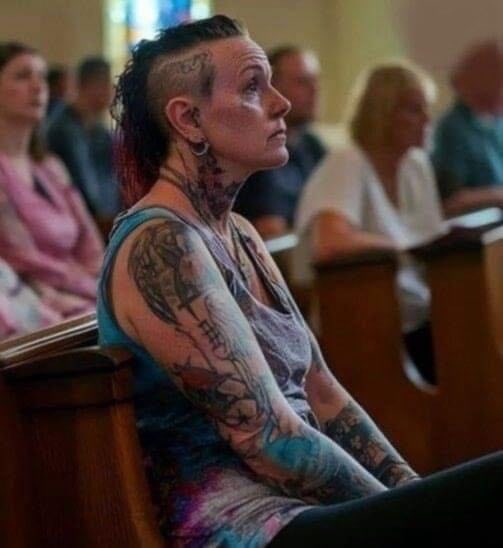Last Sunday, I arrived at church ready for a peaceful morning, only to be met with a moment of introspection. In the pews sat a woman in her 40s, adorned with tattoos and piercings. Her striking appearance instantly stood out to me.
As I was raised, attending church was always associated with wearing modest and respectful attire. Her bold style seemed to contradict the unspoken rules of decorum I had grown up with. This encounter made me reflect on my own perceptions and question if they were still relevant in today’s world.

Challenging Old Views on Church Dress
This experience prompted me to think deeply about my understanding of appropriate church clothing. After the sermon, I couldn’t resist mentioning to her that perhaps something more subdued might be appropriate for church. Her immediate response was eye-opening: “How I look has nothing to do with you.” It was clear—perhaps my discomfort stemmed from old beliefs that might no longer hold true.
I started realizing that maybe I was clinging to a traditional idea of what church garments should be. In an era where personal expression is hugely important, is it fair to expect individuals to follow outdated norms? As society evolves, so should our views on individuality, leading us to rethink what it means to dress “appropriately” for church.
Reconsidering Dress Codes in Worship Spaces
The image of churchgoers in modest dresses, suits, and ties is still fresh in the minds of many. This unofficial dress code was seen as a form of respect. Today, however, such boundaries have blurred significantly. Tattoos and unique fashion are now ways many express themselves freely.
Does this change mean churches should drop standards for attire? While modest dressing might honor the sanctity of the space for some, for others, what you wear shouldn’t restrict how you worship or your sense of belonging. Isn’t church more about acceptance and unity than about appearance?
Welcoming Diversity in Worship
Churches are, at their core, gatherings for unity. When too much emphasis is placed on appearances, the essence of community—bringing people closer to each other and God—can be lost. By making judgments based on tattoos or piercings, we risk overlooking the unique personal stories behind them.
Every individual brings their story into the church. Tattoos and piercings often symbolize pivotal moments in someone’s life or battles they’ve overcome. Focusing only on looks, we might miss these rich narratives and insights that can enhance our collective understanding of faith.
Balancing Traditional Values with Personal Identity
While embracing individuality is vital, showing respect for tradition holds its place as well. For some, dressing modestly or covering tattoos pays homage to their upbringing. It respects the comfort of those who may not be used to more casual appearances. But equally, one’s way of expressing faith is personal and unique.
Finding a middle ground that respects tradition yet allows personal expression could lead to an inclusive worship environment where everyone is welcome.
Fostering Respect in Religious Gatherings
A possible solution lies in encouraging a culture of mutual respect. Churches could promote attire that acknowledges personal style while maintaining reverence for sacred spaces. By fostering understanding, churches can nurture a more embracing atmosphere that honors diversity along with the significance of worship.
Allowing individuals to choose what feels right for them, while being mindful of their surroundings, can create a harmonious and welcoming environment.
Embracing Hearts Openly
The core principle in most faith communities is inclusivity. Jesus’s teachings emphasized compassion towards those marginalized and judged. To embody these values, faith communities might focus more on a person’s inner faith journey rather than outer appearances.
Be it tattoos, casual clothes, or formal Sunday wear, what matters is the sincere pursuit of spiritual connection. By welcoming diversity in worship spaces, communities can foster an environment where everyone is valued, no matter how they choose to present themselves.




